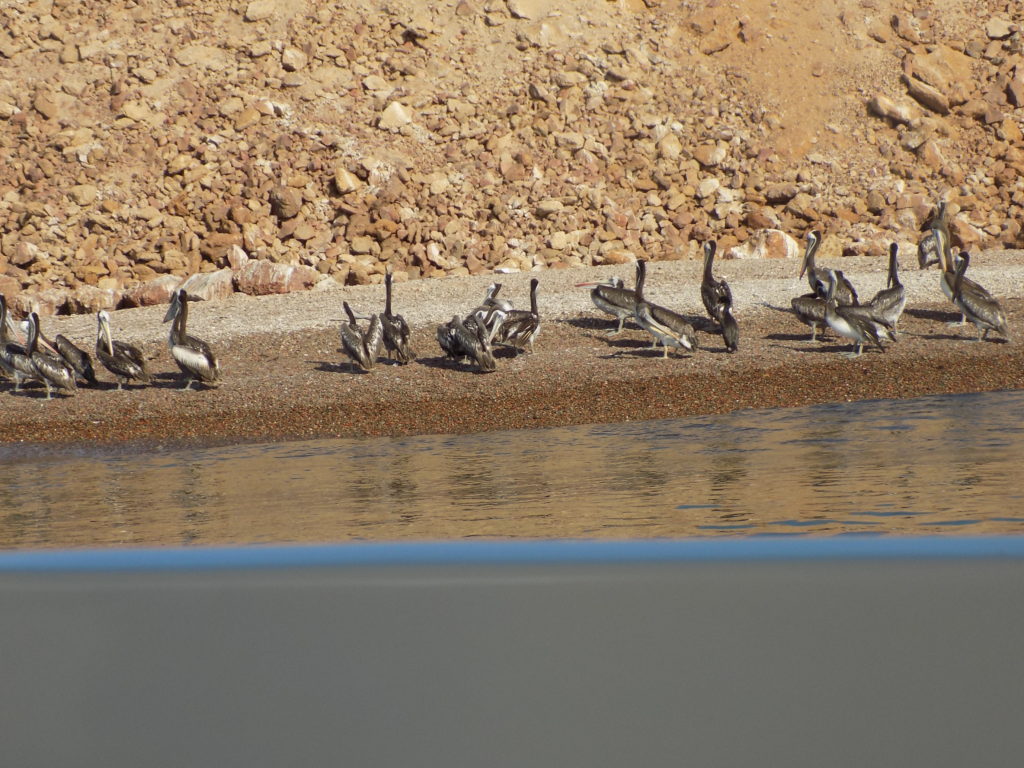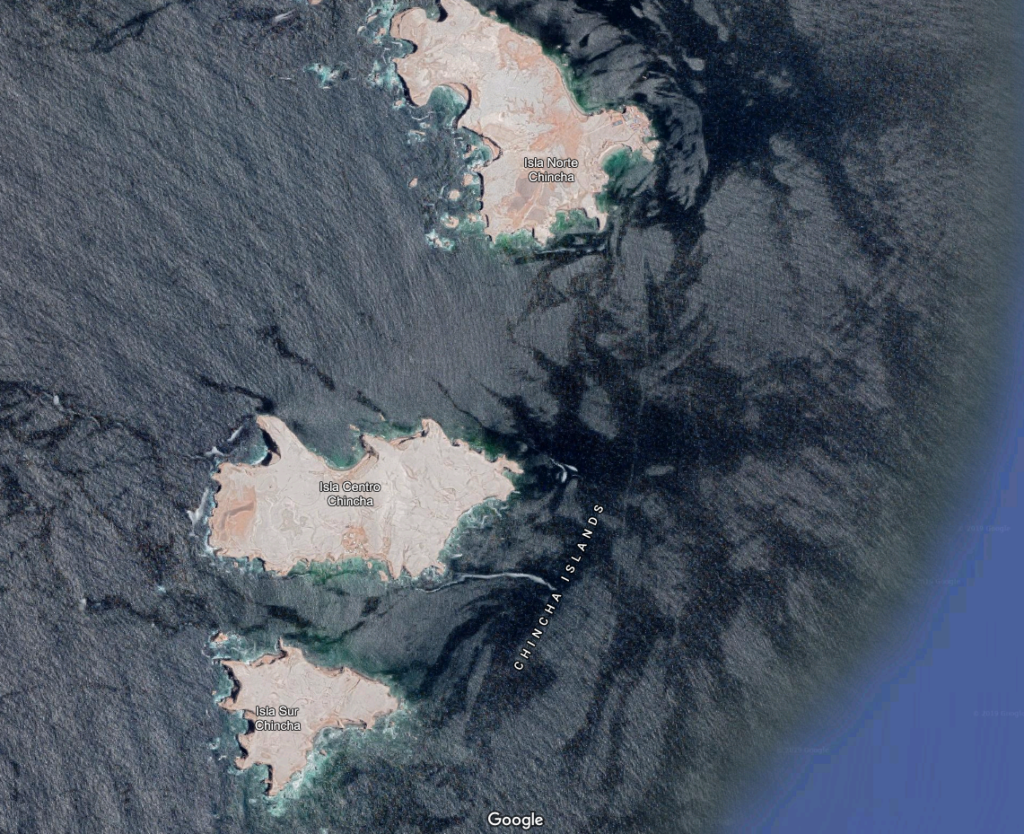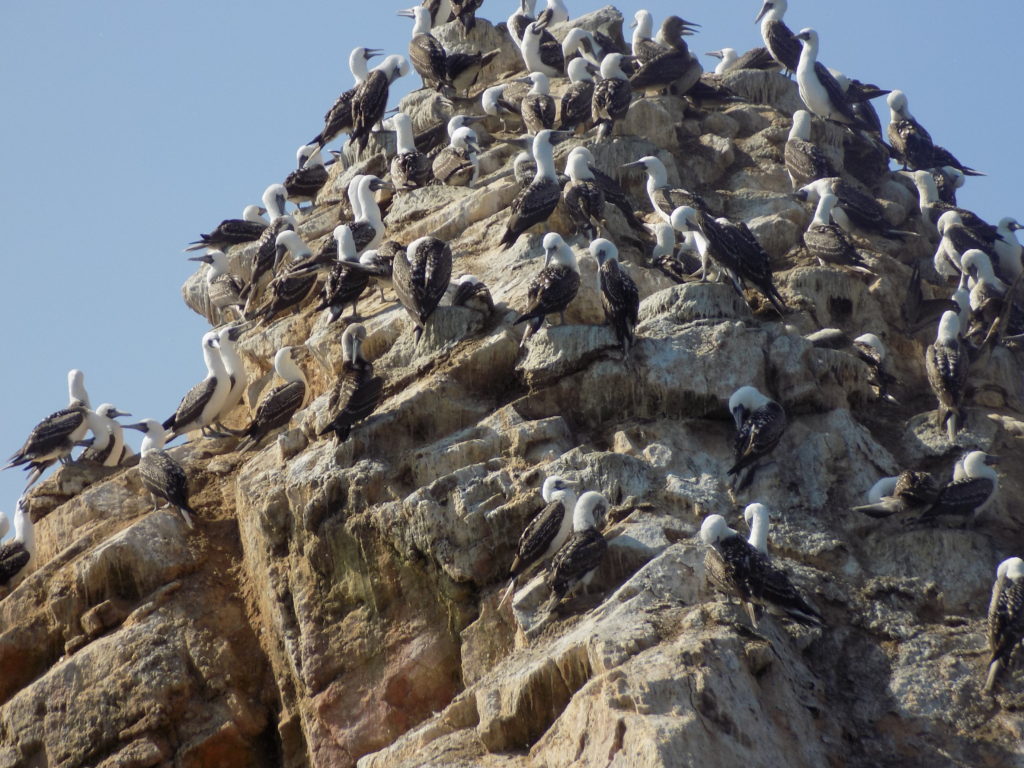The Galapagos Islands are among the myriad places I want to visit but have yet to reach in my global adventures. So it was that I awoke Tuesday morning with great anticipation for the tour to the Ballestas Islands that I’d read described as the Peruvian Galapagos. (I have to admit to a lingering shadow of mild concern held over from the previous day’s bout with motion sickness. Fortunately, that turned out to be unwarranted.) Here’s my nutshell (or, in the shorthand of the day TL;DR) evaluation: If you’re in Pisco or Paracas or anywhere along the south-central coast of PerĂº to see the Nazca Lines, the terrestrial part of the Paracas Reserve, or other attractions, you should absolutely put these islands on your itinerary. If you’re not “in the neighborhood” though, I’d hesitate to recommend going out of your way to see them. I’ll get to my experience on the tour itself but first…
The most valuable poop in the world or
We’re guano have a good time.
Some 15 or 20 kilometers west of Pisco off the coast of the south-central Peruvian desert a small group of volcanic islands rises poking above the water to a maximum height of a mere 34 meters. The largest of these islands are the cluster of three called Chincha. The Ballestas Islands that I will visit this morning are located about eight kilometers south of the main Chincha Islands but are generally considered part of that same group.
Never heavily populated, it hardly seems likely that these small islands would be the cause of a major war between Spain against an allied Chile and PerĂº but such was the case. The islands are composed mainly of the common extrusive rock called andesite although, as has been the case for centuries, one would be hard pressed to determine their composition from their present appearance. Here’s why.
Plankton, fed by organic and mineral nutrients carried in the cold waters of the Humboldt Current flowing north from Antarctica, become food for anchovies, sardines, and mackerel. These, in turn, become food for hundreds of species of seabirds – principally the Peruvian Pelican (photo below),
the Guanay Cormorant, and the Peruvian Booby. The main byproduct of this diet is a guano that is particularly rich in phosphate and nitrogen.
The Humboldt Current also contributes to creating to the desert like conditions along South America’s west coast. Thus, instead of rain washing away the bird droppings, the guano simply accumulates on the islands baking to a hard crust in the dry heat. It was once reported to be more than 50 meters thick.
Archaeological evidence in the form of artifacts uncovered from beneath the layers of guano and soil indicates guano harvesting by the Moche culture (first through eighth centuries) – a process the Europeans ignored for centuries after reaching South America’s west coast. (The Spanish noted that the Inkas viewed the guano as a highly valuable commodity but they paid it little heed beyond that observation.) In 1804 a curious Prussian naturalist named Alexander von Humboldt took a sample of the seabird excrement then analyzed it for its chemical composition. He did little more than include it as one more note among his myriad observations.
Life along the Peruvian coast continued relatively undisturbed until about 1840 when Justus von Liebig – considered the father of organic chemistry – theorized that, in addition to the carbon and hydrogen that plants absorbed from the air, nitrogen, phosphorus, and potassium were essential to plant growth and contended that nitrogen-based fertilizer was needed to grow the healthiest possible crops. Someone then recalled the analyses of von Humboldt’s seabird guano which was particularly rich in all three elements. The guano gold rush was on and it wasn’t pretty. (In case you’ve ever wondered what it’s like to look down on an island of guano the satellite image below from Google Maps provides that chance.)
With all this money involved, you can be sure there’s guano be a war.
Facing massive debt from its war of independence, the Peruvian government took control of the islands and began mining guano commercially. They increased their profit by first relying largely on the labor of coerced indigenous people and later by using immigrant Chinese workers. Both groups toiled under an abusive labor system that paid low wages, forced the miners to live in tents on the island, and inhale caustic guano dust while working 17 hours per day. They extracted an estimated half million tons per year with an annual value of $50,000,000.
Peruvian guano made its way to Europe under the control of British merchants and its success across that continent then triggered a sort of guano mania in the United States. American entrepreneurs began pressing Congress to create a process through which they could legally claim their own guano islands. An imperialist American government that had repeatedly appropriated lands from its indigenous people eventually found the solution in the 1856 Guano Islands Act.
Section 1 of the Act reads,
Whenever any citizen of the United States discovers a deposit of guano on any island, rock, or key, not within the lawful jurisdiction of any other Government, and not occupied by the citizens of any other Government, and takes peaceable possession thereof, and occupies the same, such island, rock, or key may, at the discretion of the President, be considered as appertaining to the United States.
Suddenly, the Peruvian Booby or at least its feces grew quite valuable.
(Hey, I have pictures of Lake Titikaka so you know I’m including a picture of Peruvian Boobies!)
Despite having lost its colonial control of most of South America during the first quarter of the 19th century, Spain, which hadn’t yet established diplomatic relations with PerĂº, decided it wanted its share of this ‘kaka’. Thus, in 1862, Spain sent a what it called scientific expedition to the west coast of South America though it didn’t do much actual science. Its true purpose was to support and reinforce any financial claims asserted by Spanish citizens residing in South America.
Using a July, 1863 incident at the TalambĂ³ hacienda in Lambayeque, PerĂº that had resulted in the death of one Spanish citizen, Luis HernĂ¡ndez PinzĂ³n, the leader of the “science expedition,” demanded reparations. (In truth, the Spanish were likely using this incident as a mere pretext to provide a plausible context for Spanish aggression in the region.) When PerĂº’s government refused to consider the claim for several months, the Spanish fleet seized the Chincha Islands and instituted a blockade of several Peruvian ports in April 1864.
A confluence of disputes between Chile and Spain led the former into an alliance with PerĂº in December 1865. By March 1866, Ecuador and Bolivia had also joined the alliance effectively blocking the Spanish from all ports along the continent’s west coast south of Colombia. This ultimately forced Spain to withdraw its troops by the end of that year. Although the South Americans nominally triumphed, many historians believe that the outcome of this skirmish was one of the seeds of the War of the Pacific that began in earnest in 1879.


